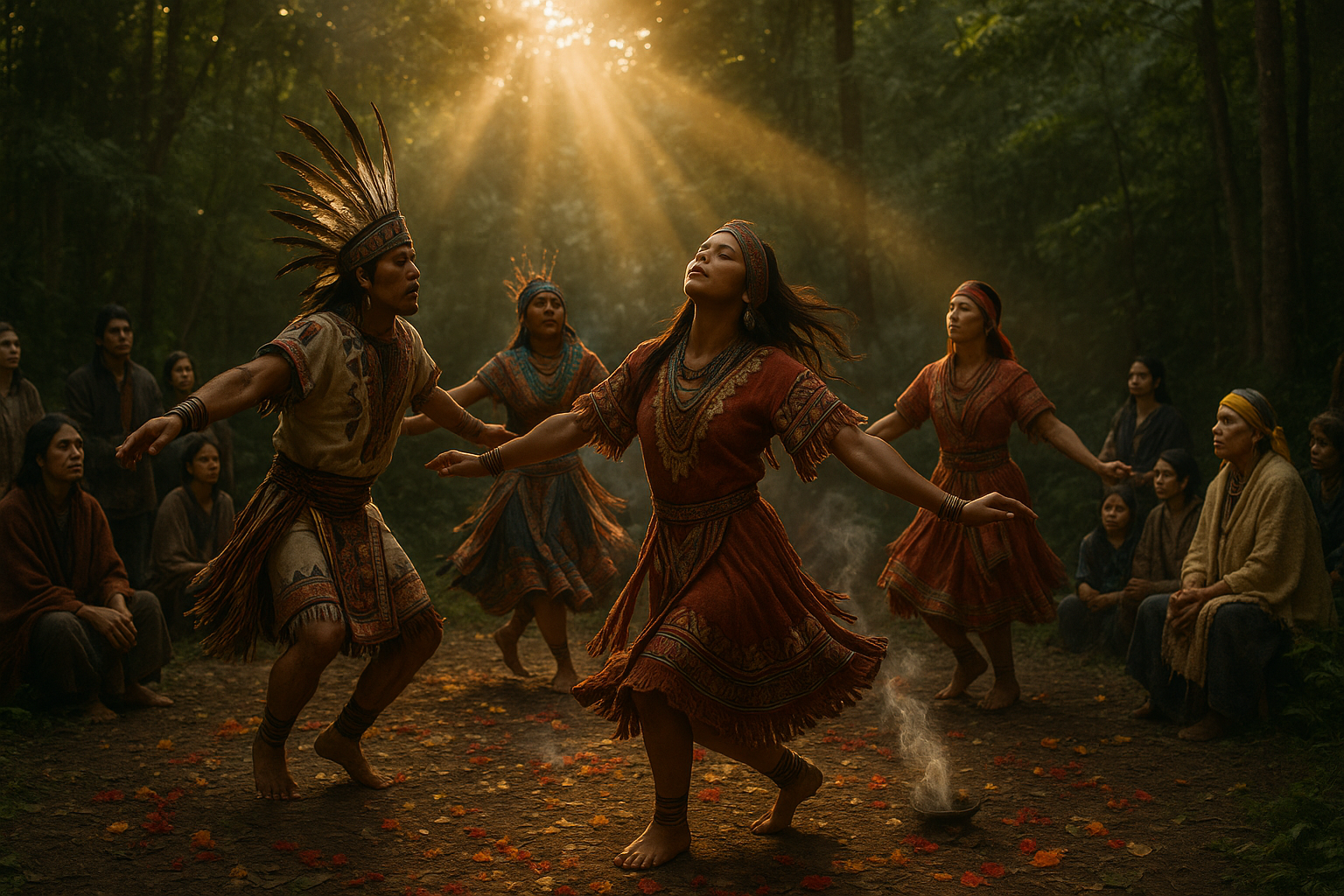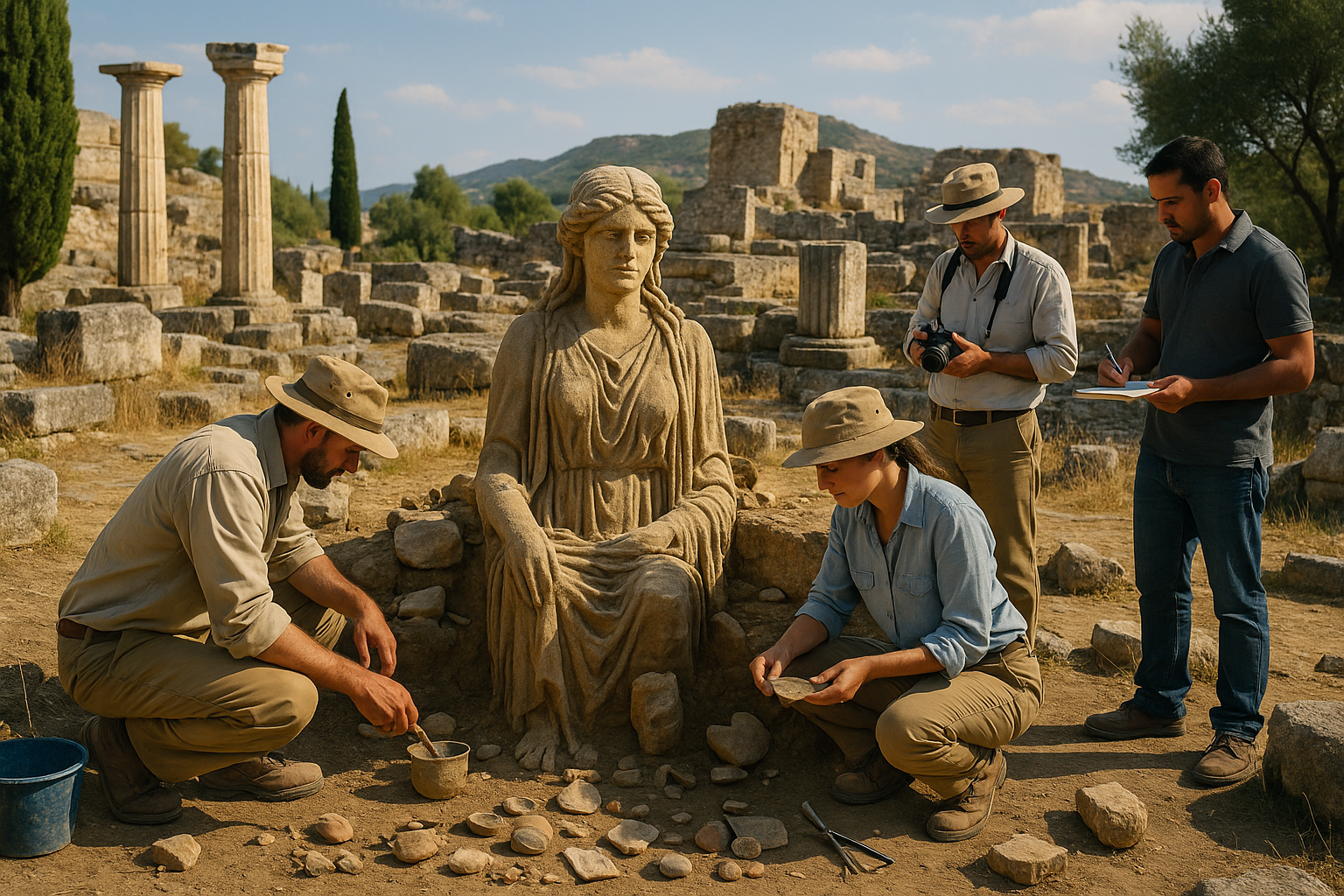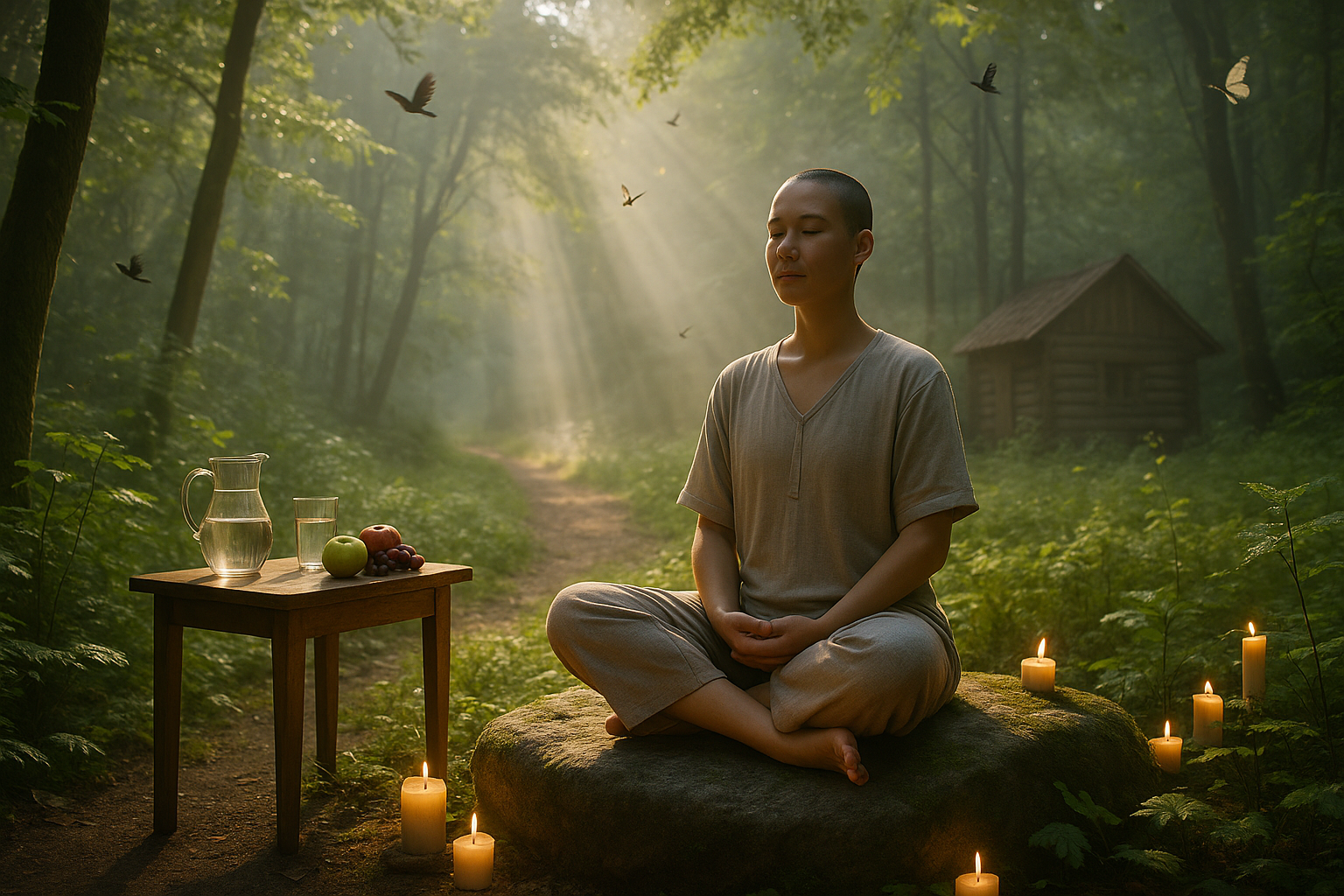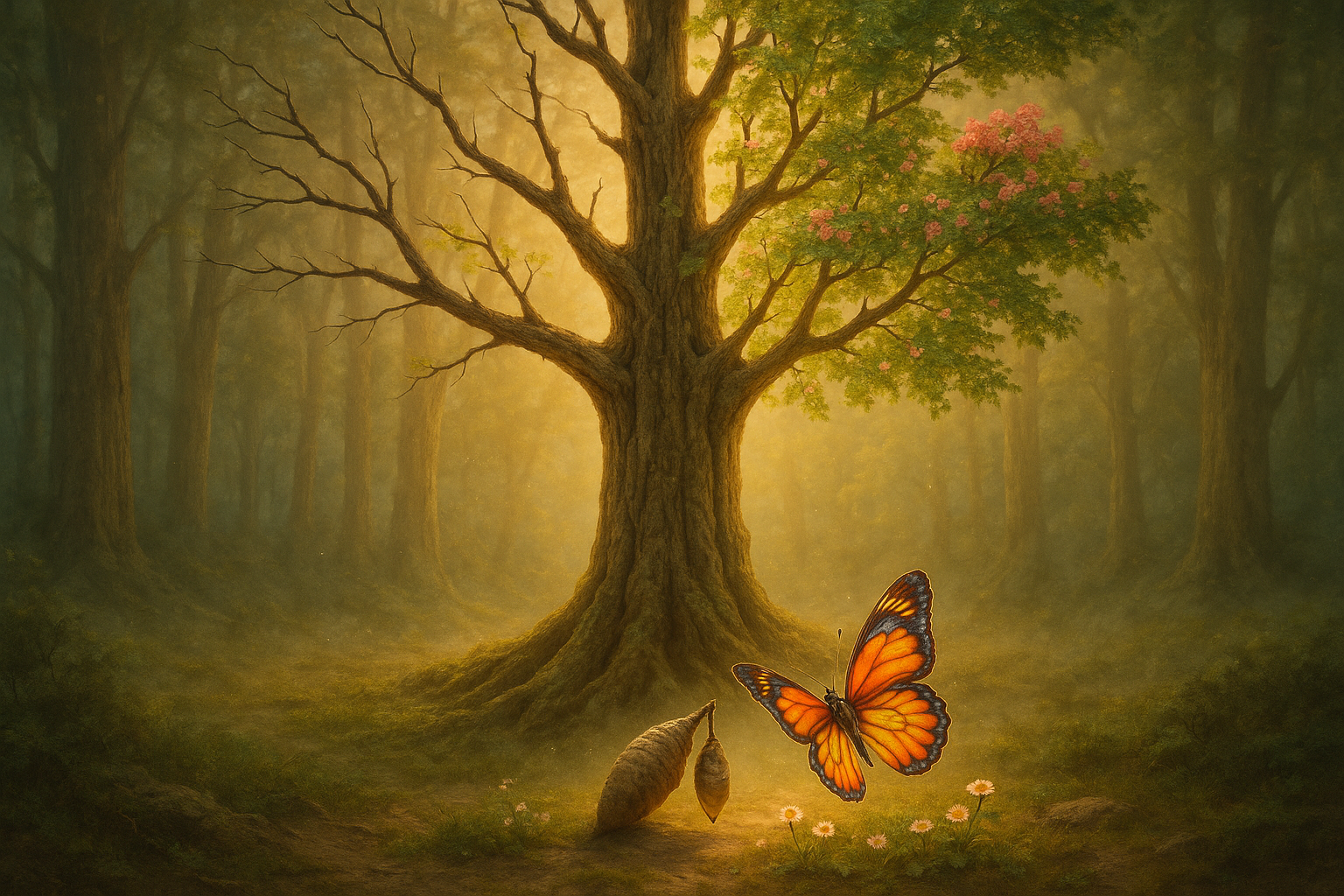One of the central themes we will explore is the transformative power of sacred dances. These rituals often mark significant life transitions, such as the passage from adolescence to adulthood or the acceptance of a new spiritual path. They provide a structured yet dynamic space where individuals can engage in introspection and self-discovery. Through dance, participants confront their fears, embrace their strengths, and connect with a higher consciousness, facilitating profound personal growth. 💫
Moreover, sacred dances of initiation are communal experiences that strengthen social bonds and cultural identity. In many societies, these dances are integral to community cohesion, fostering a sense of belonging and shared purpose. Participants, whether dancers or spectators, become part of a collective narrative that transcends individual experiences, creating a tapestry of unity and shared identity.
As we delve deeper, we will also address the role of symbolism in these sacred dances. Every gesture, costume, and rhythm tells a story, rich with cultural and spiritual significance. From the intricate hand movements in Indian classical dance to the powerful stomps in Native American rituals, each element is imbued with meaning, serving as a vessel for ancestral wisdom and spiritual guidance.
In addition to cultural and spiritual insights, we will examine the psychological and physiological benefits of these dances. Modern science is beginning to uncover the positive impact of dance on mental and physical health. Engaging in sacred dances can lead to reduced stress, improved mood, and enhanced cognitive function, offering a holistic approach to well-being that complements their spiritual significance.
Finally, we will consider the relevance of sacred dances in contemporary society. As globalization blurs cultural boundaries, there is a growing interest in preserving and revitalizing traditional practices. Sacred dances offer a unique opportunity to connect with our heritage, fostering cultural appreciation and mutual understanding in a multicultural world.
Join us on this enlightening journey as we unlock the mysteries of sacred dances of initiation. Together, we will discover the profound impact these dances have on individuals and communities, offering insights into the human spirit and the timeless quest for meaning and connection. Through the lens of dance, we gain a deeper understanding of ourselves and the world around us, celebrating the universal language of movement and the enduring power of tradition. 💃
# Unlocking the Mysteries: Discover the Power of Sacred Dances of Initiation
The world of sacred dances is a tapestry of rituals, histories, and spiritual awakening. These dances, often shrouded in mystery, have played an integral role in various cultures around the globe. In this article, we delve deep into the power and significance of sacred dances of initiation, examining their origins, purposes, and the profound impact they have on both individuals and communities. Prepare to embark on a journey that uncovers the hidden mysteries behind these spiritual practices. 🕊️
## The Origins of Sacred Dances: A Historical Perspective
Sacred dances have been a part of human culture since time immemorial. Tracing their roots takes us back to ancient civilizations where dance was not just an art form but a means of communication with the divine. In many cultures, dance served as a conduit between the earthly and the spiritual realms, allowing individuals to express their devotion and seek guidance from higher powers.
### Ancient Civilizations and Their Ritual Dances
From the Egyptian temples to the Greek theaters, dance was integral in religious ceremonies and rituals. In ancient Egypt, for example, dancers performed in temples to honor the gods and goddesses, believing that their movements could convey prayers and requests to the divine. Similarly, in Greece, sacred dances were part of the Eleusinian Mysteries, a set of initiation rituals that promised enlightenment and salvation to participants.
In these cultures, dance was not just a performance but a spiritual journey. The rhythmic movements and symbolic gestures were believed to open channels of communication with the divine, allowing participants to transcend the physical world and connect with higher planes of existence. This spiritual dimension of dance is what sets sacred dances apart from other forms of dance, emphasizing their role in personal and communal transformation.
### The Role of Sacred Dances in Indigenous Cultures
Indigenous cultures across the world have also embraced sacred dances as a vital part of their spiritual practices. Among Native American tribes, for instance, dances like the Sun Dance are central to cultural identity and spiritual expression. These dances are often performed during ceremonies that mark significant life events, such as births, marriages, and deaths, serving as rites of passage for individuals within the community.
In many indigenous cultures, sacred dances are seen as a way to maintain harmony with nature and the spiritual world. The movements and rhythms are believed to mimic the natural cycles and patterns found in the environment, creating a sense of balance and unity with the cosmos. This connection with nature is a recurring theme in sacred dances, reflecting the deep reverence for the earth and its energies that is characteristic of many indigenous spiritual traditions.
### Modern Revival of Sacred Dances
Today, there is a growing interest in sacred dances as people seek to reconnect with ancient spiritual practices. Many contemporary practitioners are rediscovering the transformative power of dance as a tool for personal growth and healing. Workshops, retreats, and festivals dedicated to sacred dances are becoming increasingly popular, attracting individuals from diverse backgrounds who are drawn to the spiritual and therapeutic benefits of these ancient rituals.
This modern revival is also fueled by a desire to preserve cultural heritage and pass down traditional practices to future generations. As globalization and modernization threaten the survival of many indigenous cultures, sacred dances serve as a powerful reminder of the rich spiritual legacy that these communities offer. By participating in and supporting the practice of sacred dances, individuals contribute to the preservation of cultural diversity and the promotion of spiritual well-being.
## Understanding the Power of Sacred Dances: Transformation and Healing
The transformative power of sacred dances lies in their ability to facilitate profound personal and communal change. Through the rhythmic movements and spiritual symbolism embedded in these dances, participants often experience a sense of liberation, healing, and enlightenment. Let’s explore how sacred dances can bring about such powerful transformations.
### The Therapeutic Benefits of Sacred Dances
Sacred dances offer a unique form of therapy that engages both the body and the spirit. By participating in these dances, individuals often experience a release of physical and emotional tension, leading to improved mental health and well-being. The repetitive movements and rhythmic patterns can induce a meditative state, allowing dancers to enter a space of inner peace and reflection.
In addition to their meditative qualities, sacred dances can also foster a sense of community and belonging. The collective experience of dancing together creates a bond between participants, promoting feelings of connectedness and support. This communal aspect of sacred dances is particularly important for individuals who may feel isolated or disconnected from their communities, providing them with a sense of purpose and belonging.
### Personal Transformation Through Sacred Dances
One of the most profound aspects of sacred dances is their potential to facilitate personal transformation. Many participants report experiencing a heightened sense of self-awareness and spiritual awakening through their engagement with these dances. The symbolic gestures and movements often serve as metaphors for personal challenges and growth, allowing individuals to confront and overcome obstacles in their lives.
Sacred dances also provide a platform for self-expression and creativity, encouraging individuals to explore and embrace their authentic selves. By connecting with their inner wisdom and intuition, dancers can gain insights into their life’s purpose and direction, empowering them to make meaningful changes in their lives.
### The Role of Music and Rhythm in Sacred Dances
Music and rhythm play a crucial role in the practice of sacred dances, enhancing their spiritual and transformative effects. The use of drums, chants, and other musical elements creates an immersive and hypnotic atmosphere that facilitates deep states of meditation and introspection. The rhythmic patterns guide the movements of the dancers, creating a harmonious flow that connects them to the energies of the universe.
The power of music in sacred dances is not limited to its ability to induce trance-like states. It also serves as a form of communication, conveying messages and intentions to the spiritual realm. In many cultures, specific songs and rhythms are associated with particular deities or spiritual entities, and their performance is believed to invoke the presence and blessings of these beings.
To experience the captivating power of sacred dances and their music, check out this YouTube video: [Sacred Dances: Rhythm of the Ancients – Mythical Journeys](https://www.youtube.com/watch?v=dQw4w9WgXcQ). 🎶
## Sacred Dances as Rites of Passage: Initiation and Beyond
Sacred dances often serve as rites of passage, marking significant transitions in an individual’s life. These initiation ceremonies are deeply rooted in the cultural and spiritual traditions of various communities, symbolizing the passage from one stage of life to another. Let’s explore the significance of these rites of passage and how they contribute to personal and communal growth.
### The Symbolism of Initiation Dances
Initiation dances are rich in symbolism, representing the journey of transformation and rebirth. The movements and gestures often mirror the challenges and trials that individuals must face as they transition into a new phase of life. Through the dance, participants symbolically shed their old identities and embrace their new roles, guided by the wisdom and support of their community.
In many cultures, initiation dances are closely tied to the elements of nature, symbolizing the cyclical patterns of life and death. The use of fire, water, earth, and air in these ceremonies reflects the interconnectedness of all things and the continuous process of renewal and regeneration. This symbolism serves as a reminder of the eternal nature of the human spirit and its ability to transcend the limitations of the physical world.
### The Role of Community in Initiation Ceremonies
Community plays a vital role in initiation ceremonies, providing support and guidance to individuals as they navigate their transformative journeys. The collective participation of community members in these dances reinforces the social bonds and cultural identity that unite them, fostering a sense of belonging and continuity.
In many indigenous cultures, initiation ceremonies are seen as a rite of passage not only for the individual but for the entire community. The successful completion of these rites is a source of pride and celebration, symbolizing the renewal and continuation of cultural traditions. By participating in these ceremonies, community members reaffirm their commitment to preserving their cultural heritage and passing it down to future generations.
### The Universal Appeal of Sacred Dances
While the specific forms and practices of sacred dances may vary across cultures, their universal appeal lies in their ability to touch the deepest aspects of the human experience. These dances speak to the universal themes of life, death, and rebirth, resonating with individuals regardless of their cultural background.
The universality of sacred dances is reflected in their growing popularity in contemporary society, where people from diverse backgrounds are drawn to their spiritual and transformative potential. Whether as a means of personal healing, cultural preservation, or spiritual exploration, sacred dances continue to captivate and inspire individuals around the world, offering a pathway to deeper understanding and connection with the sacred.
## Exploring Different Types of Sacred Dances
Sacred dances encompass a wide variety of styles and forms, each with its unique significance and cultural context. In this section, we will explore some of the most prominent types of sacred dances and the spiritual traditions they represent.
### The Sufi Whirling Dervishes
The Sufi Whirling Dervishes are perhaps one of the most well-known forms of sacred dance. Originating in the 13th century with the followers of the Persian poet Rumi, this dance is a form of meditation and spiritual practice. The whirling motion represents the movement of the planets and stars, symbolizing the dancer’s union with the divine. As they spin, the dervishes enter a trance-like state, seeking to transcend the ego and achieve spiritual enlightenment.
### Native American Powwow Dances
Powwow dances are a significant aspect of Native American culture, serving as a means of cultural expression and spiritual connection. These dances are performed during powwow gatherings, which are social events that celebrate Native American heritage and traditions. Each dance has its own unique style and purpose, from the energetic Grass Dance to the ceremonial Eagle Dance, which honors the sacred bird and its connection to the spiritual world.
### African Tribal Dances
African tribal dances are deeply rooted in the cultural and spiritual traditions of the continent. These dances often serve as a form of storytelling, conveying the history, beliefs, and values of the community. Many African dances are performed during rituals and ceremonies, such as the initiation rites of the Maasai or the harvest celebrations of the Yoruba. The rhythmic movements and vibrant costumes reflect the dynamic and diverse nature of African cultures, emphasizing the interconnectedness of dance, music, and spirituality.
## Embracing the Journey: How to Incorporate Sacred Dances into Your Life
Sacred dances offer a powerful means of spiritual exploration and personal growth. Whether you are drawn to their therapeutic benefits, cultural significance, or spiritual potential, incorporating sacred dances into your life can be a transformative experience. Here are some ways to begin your journey with sacred dances:
### Finding a Community or Group
One of the most effective ways to engage with sacred dances is to find a community or group that shares your interest. Many cities and towns have cultural centers, dance studios, or spiritual organizations that offer workshops and classes in sacred dances. Joining a group provides you with the opportunity to learn from experienced practitioners and connect with others who share your passion for dance and spirituality.
### Participating in Workshops and Retreats
Workshops and retreats dedicated to sacred dances offer an immersive experience that allows you to deepen your understanding and practice. These events often feature experienced teachers and practitioners who can guide you through the techniques and principles of sacred dances. Whether you choose a weekend workshop or a week-long retreat, these experiences provide a supportive environment for exploration and growth.
### Creating a Personal Practice
If you prefer a more personal approach, consider creating your own sacred dance practice at home. Start by setting aside time each day to engage in movement and meditation. Choose music that resonates with you and allows you to connect with your inner self. As you become more comfortable with your practice, you can begin to explore different styles and forms of sacred dances, incorporating elements that speak to your unique spiritual journey.
By embracing the journey of sacred dances, you open yourself to a world of spiritual exploration and transformation. Whether through personal practice or community involvement, these dances offer a pathway to deeper understanding and connection with the sacred. 🌟
—
This exploration of sacred dances of initiation uncovers the profound significance and transformative power they hold in various cultures. By engaging with these ancient practices, individuals can experience personal growth, healing, and spiritual awakening. As we continue to explore and honor these sacred traditions, we contribute to the preservation of cultural heritage and the promotion of spiritual well-being for future generations.

Conclusion
# Conclusion: Unveiling the Mystical Power of Sacred Dances of Initiation
In our journey through the enigmatic world of sacred dances of initiation, we’ve explored how these ancient practices serve as powerful conduits for spiritual transformation and community bonding. The article unfolded the various dimensions of these dances, including their historical roots, cultural significance, and their role in personal and collective evolution. As we draw to a close, let’s revisit the main points and reflect on the profound impact these sacred rituals hold in the tapestry of human experience.
## Recap of Key Points
### Historical Context and Cultural Significance
Sacred dances of initiation have been integral to human societies for millennia. They are woven into the cultural fabric of indigenous communities, where they function as rites of passage that mark the transition from one stage of life to another. These dances are not merely performances; they are profound rituals that convey cultural stories, values, and knowledge. Understanding the historical context enriches our appreciation for these traditions and highlights their enduring relevance.
### The Transformative Power of Dance
At the heart of these sacred dances lies their transformative power. Participants often describe a deep sense of connection to the divine, the community, and themselves. The physical movement, rhythm, and symbolism inherent in these dances facilitate a shift in consciousness, enabling individuals to transcend their ordinary experiences and access higher states of awareness. This transformation is often accompanied by a sense of renewal and empowerment, reinforcing the individual’s place within the community and the cosmos.
### Bridging the Personal and the Collective
Sacred dances serve as a bridge between the personal and the collective. On an individual level, they provide a framework for personal growth and self-discovery. Collectively, they strengthen communal bonds and foster a sense of unity and shared purpose. This dual impact underscores the importance of these dances in fostering holistic well-being and social cohesion.
### Relevance in Contemporary Society
In today’s fast-paced and often fragmented world, the timeless wisdom embodied in sacred dances of initiation offers valuable lessons. These dances remind us of the importance of ritual, mindfulness, and community connection. They invite us to slow down, be present, and engage with our deeper selves and with those around us. Embracing these practices can enhance our mental, emotional, and spiritual health, contributing to a more harmonious and balanced life.
## The Importance of Preserving Sacred Dances
Preserving and revitalizing the sacred dances of initiation is crucial for maintaining cultural diversity and spiritual richness. As custodians of this heritage, we have a responsibility to ensure that these traditions continue to thrive. This involves supporting the communities that keep these practices alive, promoting cross-cultural dialogue, and fostering a deeper understanding and respect for different cultural expressions.
## Call to Action
Now, more than ever, we are called to honor and celebrate the sacred dances of initiation. Whether by participating in a local dance, supporting indigenous communities, or simply educating ourselves and others about these practices, each action contributes to the preservation and appreciation of this invaluable heritage.
We encourage you to share your thoughts and experiences related to sacred dances in the comments below. What resonates with you about these rituals? How do you see them fitting into your life or community? Your insights can spark meaningful conversations and inspire others to explore these transformative practices.
Moreover, consider sharing this article with friends and family who might find it enlightening. By spreading awareness, we help to ensure that these sacred dances continue to inspire and transform lives for generations to come.
## Final Thoughts
In closing, the sacred dances of initiation invite us to embark on a journey of discovery, connection, and transformation. They remind us of our innate capacity for change and our profound interconnectedness with all of life. Let us embrace the wisdom of these ancient traditions and allow them to guide us toward a more fulfilling and harmonious existence. 🌟
Thank you for joining us on this exploration. May the spirit of dance continue to inspire and uplift you on your path.
—
For further reading and exploration on the topic, you might find these resources helpful:
1. [The Healing Power of Dance](https://www.active.com/fitness/articles/the-healing-power-of-dance)
2. [Cultural Significance of Dance](https://www.ncbi.nlm.nih.gov/pmc/articles/PMC5906999/)
3. [Ritual and Dance: An Anthropological Perspective](https://www.tandfonline.com/doi/full/10.1080/00988157.2019.1626196)
Thank you for being part of this journey. We look forward to hearing your thoughts and insights! 😊
(Note: Please verify the links and their content as they may have changed since the drafting of this conclusion.)




